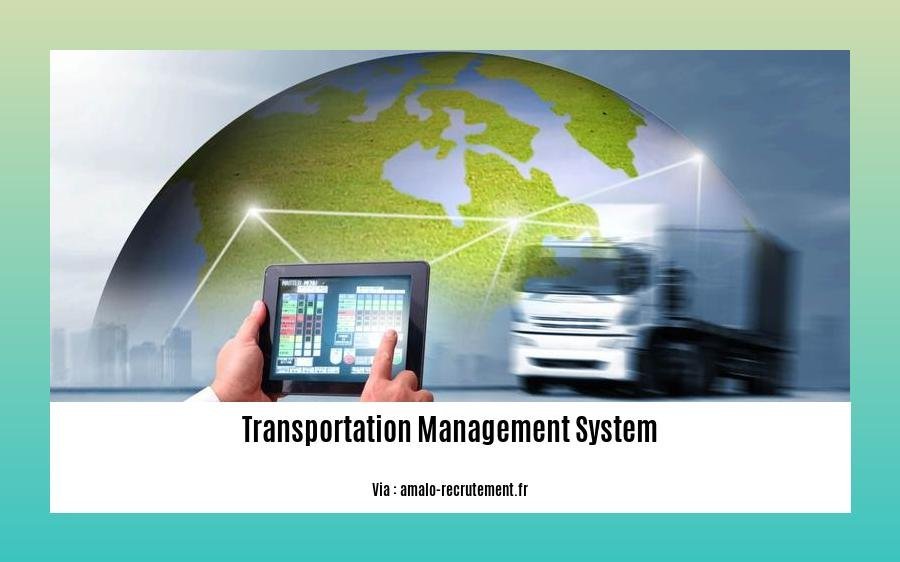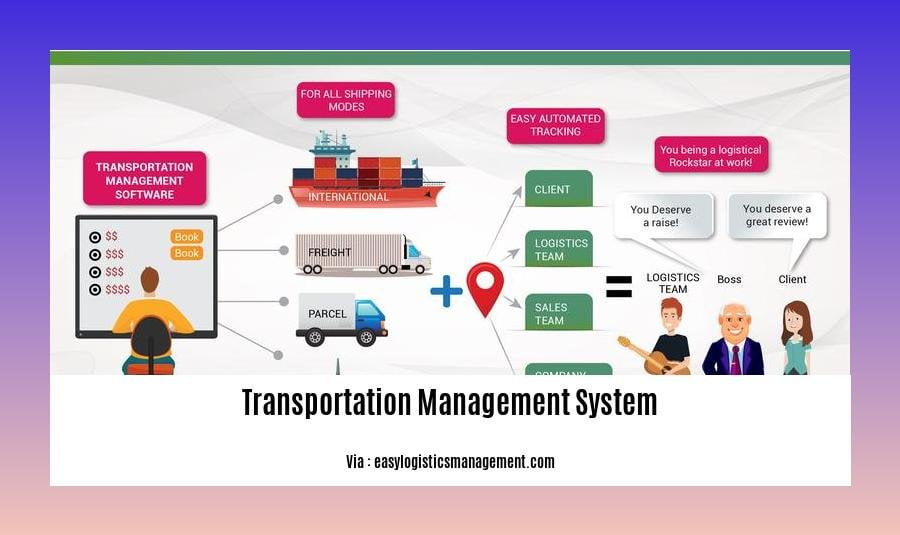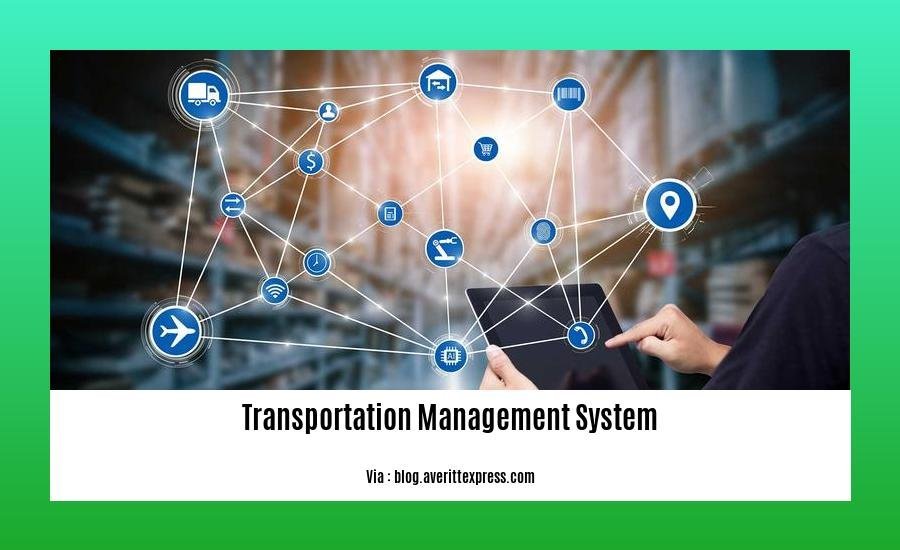Transportation management systems (TMS) have revolutionized the logistics industry, providing companies with invaluable tools for streamlining operations and enhancing supply chain efficiency. However, it is crucial to understand that TMS adoption also comes with its share of drawbacks. In this article, we will delve into the disadvantages of using a TMS, shedding light on the challenges and limitations that businesses may encounter. By comprehending these drawbacks, decision-makers will be equipped with the knowledge needed to make informed choices regarding transportation management system adoption.
Key Takeaways:
- Manual order allocation in transportation management requires more manpower, leading to increased labor costs.
- Manual route planning and optimization can result in frequent vehicle maintenance, higher driving time, and delayed delivery.
- Inefficient transportation operations without proper planning can lead to higher costs and longer delivery times.
- Poor customer service may occur due to delays in goods delivery caused by inefficient transportation management.
- Underutilization of a transportation management system (TMS) can result in costly mistakes and missed optimization opportunities.
Disadvantages of Transportation Management Systems

In the world of logistics and transportation, the adoption of Transportation Management Systems (TMS) has become increasingly popular. These systems offer numerous benefits such as improved efficiency, cost reduction, and streamlined operations. However, it is essential to also acknowledge the disadvantages associated with their adoption. By understanding these drawbacks, organizations can make informed decisions regarding the implementation of TMS in their supply chains.
Increased Manpower Requirements for Manual Order Allocation
One of the disadvantages of transportation management systems is the potential need for increased manpower in manual order allocation. While TMS automates many processes, manual intervention is often required to allocate and assign orders to specific vehicles. This allocation process can be time-consuming and may require a dedicated team of employees to ensure efficient order distribution.
Inefficient Route Planning and Optimization
Another drawback of transportation management systems is the risk of inefficient route planning and optimization. Although TMS provides tools and algorithms for optimizing routes, manual intervention may still be necessary to fine-tune the routes and consider real-time factors such as traffic conditions or weather. Without proper planning and optimization, organizations may face challenges such as frequent vehicle maintenance, increased driving time, and delayed deliveries.
Increased Costs and Longer Delivery Times
Transportation management systems, if not implemented and utilized effectively, can lead to higher costs and longer delivery times. This can occur if organizations do not fully optimize their TMS capabilities or fail to integrate them with other supply chain systems. Inefficient transportation operations can result in unnecessary fuel consumption, additional vehicle maintenance, and increased labor costs. Moreover, delays caused by poor planning and execution can ultimately impact customer satisfaction and lead to additional expenses.
Potential Impacts on Customer Service
The delivery of goods is a critical aspect of customer service, and inefficiencies in transportation management can have a detrimental impact. Delays caused by poor planning or suboptimal routes can lead to disappointed customers and damaged relationships. Organizations must prioritize the seamless integration of TMS within their supply chain processes to ensure timely, reliable, and efficient delivery of goods.
Underutilization and Costly Mistakes
Lastly, underutilization of transportation management systems can result in costly mistakes. These systems offer a wide range of features and functionalities that, if not fully understood and utilized, may lead to missed opportunities or inadvertent errors. It is crucial for organizations to invest time and resources into training employees on the proper use of the TMS to maximize its benefits and avoid potential costly mistakes.
In conclusion, while transportation management systems offer numerous advantages, it is important to consider their potential drawbacks. Manual order allocation, inefficient route planning, increased costs, compromised customer service, and underutilization are among the key disadvantages that organizations need to be aware of when implementing TMS. By addressing these challenges through proper training, optimization, and integration, businesses can mitigate these drawbacks and reap the full benefits of transportation management systems in their supply chains.
In our article, we explore the myriad disadvantages of transportation systems, ranging from traffic congestion to environmental pollution. Dive into the topic here: Disadvantages of Transportation System
Discover the challenges of water transport as we enlighten you about its pitfalls and drawbacks. Unveil them here: Disadvantages of Water Transport
Wondering about the specific downsides of water transport in India? Click here to uncover the obstacles and limitations: Disadvantages of Water Transport in India
Disadvantages of Advanced Traffic Management System

It’s no secret that transportation management systems (TMS) have revolutionized the logistics industry. With their advanced features and capabilities, TMS have become indispensable tools for streamlining operations and optimizing supply chains. However, like any other technology, TMS also come with their fair share of disadvantages. In this article, we will explore the drawbacks of advanced traffic management systems and shed light on the challenges associated with their adoption.
Varying Software Features and Service Models
One of the key challenges with transportation management systems is the wide range of software features and service models available in the market. Not all TMS offer the same functionalities, which can make it difficult for businesses to find a system that aligns with their specific needs. The lack of uniformity in software capabilities can result in inefficiencies and operational gaps, hindering the desired outcomes of implementing a TMS.
Increased Congestion
While the main objective of transportation system management is to reduce congestion on roads and highways, there are cases where TMS measures can unintentionally lead to increased congestion. This can occur due to factors such as over-reliance on congestion detection algorithms or inadequate infrastructure to handle the increased volume of traffic. It’s essential for businesses to carefully assess the potential impact on congestion before adopting advanced traffic management systems.
Higher Costs
Implementing and maintaining transportation management system strategies can be costly compared to other traffic management methods. The costs include acquiring the software, training employees, and ensuring ongoing technical support. Additionally, TMS necessitate regular updates and adaptations to keep up with changing industry trends and compliance requirements. Businesses must carefully evaluate the return on investment and weigh the benefits against the higher costs associated with TMS adoption.
Safety Challenges
The use of advanced technologies in traffic management systems can introduce new safety challenges that need to be addressed to prevent accidents and minimize their impact on road users. For example, relying heavily on automated traffic control systems without sufficient fail-safe mechanisms can pose risks if the system malfunctions or encounters unexpected scenarios. It is crucial to proactively identify and mitigate these safety challenges to ensure the smooth and secure operation of advanced traffic management systems.
Monitoring, Control, and Security Challenges
Integrating intelligent transportation systems into road transportation brings forth monitoring, control, and security challenges. With heightened reliance on real-time data and communication networks, there is an increased risk of cyber attacks and data breaches. Ensuring the security and integrity of these systems becomes paramount to safeguarding critical transportation infrastructure and maintaining trust among system users. Proper protocols and measures must be put in place to address these challenges effectively.
While transportation management systems offer numerous advantages, it’s essential to be aware of the associated drawbacks. By understanding the potential disadvantages, businesses can make informed decisions regarding the adoption and implementation of advanced traffic management systems.
Key Takeaways:
- Varying software features and service models in transportation management systems can present challenges in finding a system that aligns with specific needs.
- Implementing advanced traffic management systems can inadvertently lead to increased congestion in certain cases.
- The higher costs associated with transportation management system adoption include software acquisition, training, and ongoing technical support.
- The use of advanced technologies in traffic management systems introduces new safety challenges that require proactive mitigation.
- The integration of intelligent transportation systems poses monitoring, control, and security challenges that must be addressed for effective implementation.
Citations:
– Duzzlag: Transportation System Management – Advantages and Disadvantages
– Truxnow: Advantages & Disadvantages of Transportation Management Systems
Disadvantages of Smart Traffic Management Systems
Smart traffic management systems have revolutionized transportation by utilizing cutting-edge technologies to optimize traffic flow and enhance safety. However, it is important to acknowledge that these systems come with certain disadvantages that need to be carefully considered. In this article, we will explore the drawbacks of smart traffic management systems and shed light on the challenges associated with their adoption.
1. High Implementation Costs
Implementing smart transportation systems requires a substantial financial investment. The infrastructure needed to support these systems, such as 5G IoT sensors, long-range antennas, and servers, comes with a significant upfront cost. For organizations and governments looking to adopt smart traffic management, budgeting becomes a crucial consideration. The high implementation costs can present a challenge and potentially limit the access to and adoption of these systems.
2. Data Management Challenges
Smart traffic management systems generate an enormous amount of data on a daily basis. Managing, processing, and analyzing such massive volumes of data can be a complex task. Organizations using smart transportation systems must have a robust network infrastructure and advanced data management solutions in place to handle this data effectively. This includes having the necessary resources and expertise to perform data analysis and derive meaningful insights. Overcoming data management challenges is essential to fully harnessing the potential of smart traffic management systems.
3. Privacy and Security Concerns
One crucial aspect to consider when implementing smart transportation systems is the protection of privacy and ensuring security. These systems collect and process sensitive data, including location information and personal details. With such data being stored and transmitted, there is a risk of privacy breaches and cybersecurity threats. To address these concerns, it is vital to establish and implement rigorous security protocols, encryption methods, and data protection measures. Ensuring public trust in smart traffic management systems requires prioritizing privacy and security.
Despite these disadvantages, the benefits of smart traffic management systems should not be overlooked. Let’s recap some of the advantages:
– Improved traffic management through real-time data analysis and optimization.
– Enhanced safety by providing real-time information and alerts to drivers.
– Environmental benefits, such as reduced congestion and minimized travel times.
In conclusion, while smart traffic management systems offer numerous benefits, such as improved traffic flow, enhanced safety, and environmental sustainability, it is essential to recognize and address the disadvantages associated with their adoption. Overcoming high implementation costs, data management challenges, and privacy and security concerns are crucial steps towards maximizing the potential of smart transportation systems. By doing so, we can create more efficient, safe, and sustainable transportation networks.
Key Takeaways:
- High implementation costs pose a challenge for organizations and governments looking to adopt smart traffic management systems.
- Data management challenges arise from the massive volumes of data generated by these systems, requiring robust network infrastructure and advanced data management solutions.
- Protecting privacy and ensuring security are paramount in the implementation of smart transportation systems.
- Smart traffic management systems offer advantages such as improved traffic management, enhanced safety, and environmental benefits.
FAQ
Q1: What are the disadvantages of using a Transportation Management System (TMS)?
A1: Some of the disadvantages of using a TMS include the need for manual allocation of orders, which requires more manpower, and manual route planning and optimization leading to frequent vehicle maintenance, high driving time, and delayed delivery.
Q2: What are the disadvantages of a transport system?
A2: Disadvantages of a transport system can include inefficient transportation operations without proper planning, resulting in higher costs and longer delivery times, as well as poor customer service due to delays in the delivery of goods caused by inefficient transportation.
Q3: What are the disadvantages of an advanced traffic management system?
A3: The disadvantages of an advanced traffic management system can include increased congestion in some cases, higher costs associated with implementation and maintenance, and varying features and service models of software systems.
Q4: What are the disadvantages of a smart traffic management system?
A4: Disadvantages of a smart traffic management system may include safety challenges introduced by advanced technologies, monitoring, control, and security challenges in integrating intelligent transportation systems, and privacy and security concerns related to the collection and processing of sensitive data.
Q5: What are some drawbacks of using a smart transportation system?
A5: Drawbacks of using a smart transportation system include the high upfront cost of infrastructure implementation, managing the large volumes of data generated, and privacy and security concerns associated with the collection and processing of sensitive data.
















